-
EXECUTIVE SUMMARY
-
1.1.
-
Market Overview
-
Key Findings
-
Market Segmentation
-
1.4.
-
Competitive Landscape
-
Challenges and Opportunities
-
Future
-
Outlook
-
\r\n
-
MARKET INTRODUCTION
-
Definition
- Research Objective
- Assumption
-
2.2.
-
Scope of the study
-
2.2.3.
-
Limitations
-
RESEARCH METHODOLOGY
-
Overview
-
Data Mining
-
Secondary Research
-
Primary Research
- Primary Interviews
- Breakdown of Primary Respondents
-
and Information Gathering Process
-
Forecasting Model
-
Market Size Estimation
- Bottom-Up
- Top-Down Approach
-
Approach
-
Data Triangulation
-
3.8.
-
Validation
-
\r\n
-
MARKET DYNAMICS
-
Overview
-
4.2.
-
Drivers
-
Restraints
-
Opportunities
-
MARKET FACTOR ANALYSIS
-
Value chain Analysis
-
Porter's Five Forces Analysis
- Bargaining Power of Buyers
- Threat of Substitutes
- Intensity
-
5.2.1.
-
Bargaining Power of Suppliers
-
5.2.3.
-
Threat of New Entrants
-
of Rivalry
-
COVID-19 Impact Analysis
- Market Impact Analysis
- Regional Impact
- Opportunity and Threat Analysis
-
\r\n
-
TUBE PACKAGING MARKET, BY APPLICATION (USD BILLION)
-
Pharmaceutical
-
Cosmetics
-
FoodBeverage
-
Household Products
-
7.
-
TUBE PACKAGING MARKET, BY MATERIAL (USD BILLION)
-
Plastic
-
Aluminum
-
Paperboard
-
Glass
-
TUBE PACKAGING MARKET, BY TYPE (USD
-
BILLION)
-
Rigid Tubes
-
Flexible Tubes
-
Stand-Up Tubes
-
TUBE PACKAGING MARKET, BY CLOSURE TYPE (USD BILLION)
-
Screw Caps
-
Flip Caps
-
Nozzles
-
Spouts
-
TUBE PACKAGING
-
MARKET, BY REGIONAL (USD BILLION)
-
North America
- US
- Canada
-
Europe
- Germany
- UK
- Russia
- Italy
- Spain
-
10.2.3.
-
France
-
10.2.7.
-
Rest of Europe
-
APAC
- China
- India
- South Korea
- Malaysia
- Thailand
- Indonesia
- Rest of APAC
-
10.3.3.
-
Japan
-
South America
- Mexico
- Argentina
- Rest of South
-
10.4.1.
-
Brazil
-
America
-
MEA
- GCC Countries
- South Africa
- Rest of MEA
-
\r\n
-
COMPETITIVE LANDSCAPE
-
11.1.
-
Overview
-
Competitive Analysis
-
Market share Analysis
-
Major Growth Strategy in the Tube Packaging Market
-
Competitive
-
Benchmarking
-
Leading Players in Terms of Number of Developments in the
-
Tube Packaging Market
-
Key developments and growth strategies
- Merger & Acquisitions
- Joint Ventures
-
11.7.1.
-
New Product Launch/Service Deployment
-
Major Players Financial Matrix
- Major Players R&D Expenditure. 2023
-
11.8.1.
-
Sales and Operating Income
-
COMPANY PROFILES
-
Essel Propack
- Financial Overview
- Products Offered
- Key Developments
- SWOT
- Key Strategies
-
Analysis
-
Mondi Group
- Financial
- Products Offered
- Key Developments
- Key Strategies
-
Overview
-
12.2.4.
-
SWOT Analysis
-
Berry Global
- Products Offered
- Key Developments
- SWOT Analysis
- Key Strategies
-
12.3.1.
-
Financial Overview
-
Graham Packaging
- Financial Overview
- Products Offered
- SWOT Analysis
- Key Strategies
- Financial Overview
- Products Offered
- SWOT Analysis
- Key Strategies
- Financial Overview
- Products Offered
- Key Developments
- SWOT Analysis
- Key Strategies
-
Company
-
12.4.3.
-
Key Developments
-
12.5.
-
Albea
-
12.5.3.
-
Key Developments
-
12.6.
-
Constantia Flexibles
-
Cohesion Packaging
- Financial Overview
- Products
- Key Developments
- SWOT Analysis
-
Offered
-
12.7.5.
-
Key Strategies
-
Amcor
- Financial Overview
- Key Developments
- SWOT Analysis
- Key Strategies
-
12.8.2.
-
Products Offered
-
AptarGroup
- Financial Overview
- Products Offered
- Key Developments
- SWOT
- Key Strategies
-
Analysis
-
Crown Holdings
- Products Offered
- Key Developments
- SWOT Analysis
- Key Strategies
-
12.10.1.
-
Financial Overview
-
ProAmpac
- Financial Overview
- Products Offered
- SWOT Analysis
- Key Strategies
-
12.11.3.
-
Key Developments
-
Ctrl+N
- Financial Overview
- Products Offered
- Key Developments
- SWOT Analysis
- Key
-
Strategies
-
Huhtamaki
- Financial Overview
- Key Developments
- SWOT Analysis
- Key Strategies
-
12.13.2.
-
Products Offered
-
Sonoco Products Company
- Financial
- Products Offered
- Key Developments
- Key Strategies
-
Overview
-
12.14.4.
-
SWOT Analysis
-
Sealed Air
- Products Offered
- Key Developments
- SWOT Analysis
- Key Strategies
-
12.15.1.
-
Financial Overview
-
APPENDIX
-
References
-
Related Reports
-
LIST OF TABLES
-
\r\nTABLE
-
LIST OF ASSUMPTIONS
-
NORTH AMERICA TUBE PACKAGING MARKET SIZE ESTIMATES
-
& FORECAST, BY APPLICATION, 2019-2035 (USD BILLIONS)
-
NORTH AMERICA
-
TUBE PACKAGING MARKET SIZE ESTIMATES & FORECAST, BY MATERIAL, 2019-2035 (USD
-
BILLIONS)
-
NORTH AMERICA TUBE PACKAGING MARKET SIZE ESTIMATES &
-
FORECAST, BY TYPE, 2019-2035 (USD BILLIONS)
-
NORTH AMERICA TUBE PACKAGING
-
MARKET SIZE ESTIMATES & FORECAST, BY CLOSURE TYPE, 2019-2035 (USD BILLIONS)
-
NORTH AMERICA TUBE PACKAGING MARKET SIZE ESTIMATES & FORECAST,
-
BY REGIONAL, 2019-2035 (USD BILLIONS)
-
US TUBE PACKAGING MARKET SIZE
-
ESTIMATES & FORECAST, BY APPLICATION, 2019-2035 (USD BILLIONS)
-
TABLE 8.
-
US TUBE PACKAGING MARKET SIZE ESTIMATES & FORECAST, BY MATERIAL, 2019-2035 (USD
-
BILLIONS)
-
US TUBE PACKAGING MARKET SIZE ESTIMATES & FORECAST,
-
BY TYPE, 2019-2035 (USD BILLIONS)
-
US TUBE PACKAGING MARKET SIZE
-
ESTIMATES & FORECAST, BY CLOSURE TYPE, 2019-2035 (USD BILLIONS)
-
TABLE
-
US TUBE PACKAGING MARKET SIZE ESTIMATES & FORECAST, BY REGIONAL, 2019-2035
-
(USD BILLIONS)
-
CANADA TUBE PACKAGING MARKET SIZE ESTIMATES &
-
FORECAST, BY APPLICATION, 2019-2035 (USD BILLIONS)
-
CANADA TUBE PACKAGING
-
MARKET SIZE ESTIMATES & FORECAST, BY MATERIAL, 2019-2035 (USD BILLIONS)
-
CANADA TUBE PACKAGING MARKET SIZE ESTIMATES & FORECAST, BY TYPE,
-
CANADA TUBE PACKAGING MARKET SIZE ESTIMATES
-
& FORECAST, BY CLOSURE TYPE, 2019-2035 (USD BILLIONS)
-
CANADA
-
TUBE PACKAGING MARKET SIZE ESTIMATES & FORECAST, BY REGIONAL, 2019-2035 (USD
-
BILLIONS)
-
EUROPE TUBE PACKAGING MARKET SIZE ESTIMATES & FORECAST,
-
BY APPLICATION, 2019-2035 (USD BILLIONS)
-
EUROPE TUBE PACKAGING MARKET
-
SIZE ESTIMATES & FORECAST, BY MATERIAL, 2019-2035 (USD BILLIONS)
-
TABLE
-
EUROPE TUBE PACKAGING MARKET SIZE ESTIMATES & FORECAST, BY TYPE, 2019-2035
-
(USD BILLIONS)
-
EUROPE TUBE PACKAGING MARKET SIZE ESTIMATES &
-
FORECAST, BY CLOSURE TYPE, 2019-2035 (USD BILLIONS)
-
EUROPE TUBE
-
PACKAGING MARKET SIZE ESTIMATES & FORECAST, BY REGIONAL, 2019-2035 (USD BILLIONS)
-
GERMANY TUBE PACKAGING MARKET SIZE ESTIMATES & FORECAST, BY
-
APPLICATION, 2019-2035 (USD BILLIONS)
-
GERMANY TUBE PACKAGING MARKET
-
SIZE ESTIMATES & FORECAST, BY MATERIAL, 2019-2035 (USD BILLIONS)
-
TABLE
-
GERMANY TUBE PACKAGING MARKET SIZE ESTIMATES & FORECAST, BY TYPE, 2019-2035
-
(USD BILLIONS)
-
GERMANY TUBE PACKAGING MARKET SIZE ESTIMATES &
-
FORECAST, BY CLOSURE TYPE, 2019-2035 (USD BILLIONS)
-
GERMANY TUBE
-
PACKAGING MARKET SIZE ESTIMATES & FORECAST, BY REGIONAL, 2019-2035 (USD BILLIONS)
-
UK TUBE PACKAGING MARKET SIZE ESTIMATES & FORECAST, BY APPLICATION,
-
UK TUBE PACKAGING MARKET SIZE ESTIMATES
-
& FORECAST, BY MATERIAL, 2019-2035 (USD BILLIONS)
-
UK TUBE PACKAGING
-
MARKET SIZE ESTIMATES & FORECAST, BY TYPE, 2019-2035 (USD BILLIONS)
-
TABLE
-
UK TUBE PACKAGING MARKET SIZE ESTIMATES & FORECAST, BY CLOSURE TYPE, 2019-2035
-
(USD BILLIONS)
-
UK TUBE PACKAGING MARKET SIZE ESTIMATES & FORECAST,
-
BY REGIONAL, 2019-2035 (USD BILLIONS)
-
FRANCE TUBE PACKAGING MARKET
-
SIZE ESTIMATES & FORECAST, BY APPLICATION, 2019-2035 (USD BILLIONS)
-
TABLE
-
FRANCE TUBE PACKAGING MARKET SIZE ESTIMATES & FORECAST, BY MATERIAL, 2019-2035
-
(USD BILLIONS)
-
FRANCE TUBE PACKAGING MARKET SIZE ESTIMATES &
-
FORECAST, BY TYPE, 2019-2035 (USD BILLIONS)
-
FRANCE TUBE PACKAGING
-
MARKET SIZE ESTIMATES & FORECAST, BY CLOSURE TYPE, 2019-2035 (USD BILLIONS)
-
FRANCE TUBE PACKAGING MARKET SIZE ESTIMATES & FORECAST, BY REGIONAL,
-
RUSSIA TUBE PACKAGING MARKET SIZE ESTIMATES
-
& FORECAST, BY APPLICATION, 2019-2035 (USD BILLIONS)
-
RUSSIA
-
TUBE PACKAGING MARKET SIZE ESTIMATES & FORECAST, BY MATERIAL, 2019-2035 (USD
-
BILLIONS)
-
RUSSIA TUBE PACKAGING MARKET SIZE ESTIMATES & FORECAST,
-
BY TYPE, 2019-2035 (USD BILLIONS)
-
RUSSIA TUBE PACKAGING MARKET SIZE
-
ESTIMATES & FORECAST, BY CLOSURE TYPE, 2019-2035 (USD BILLIONS)
-
TABLE
-
RUSSIA TUBE PACKAGING MARKET SIZE ESTIMATES & FORECAST, BY REGIONAL, 2019-2035
-
(USD BILLIONS)
-
ITALY TUBE PACKAGING MARKET SIZE ESTIMATES &
-
FORECAST, BY APPLICATION, 2019-2035 (USD BILLIONS)
-
ITALY TUBE PACKAGING
-
MARKET SIZE ESTIMATES & FORECAST, BY MATERIAL, 2019-2035 (USD BILLIONS)
-
ITALY TUBE PACKAGING MARKET SIZE ESTIMATES & FORECAST, BY TYPE,
-
ITALY TUBE PACKAGING MARKET SIZE ESTIMATES
-
& FORECAST, BY CLOSURE TYPE, 2019-2035 (USD BILLIONS)
-
ITALY
-
TUBE PACKAGING MARKET SIZE ESTIMATES & FORECAST, BY REGIONAL, 2019-2035 (USD
-
BILLIONS)
-
SPAIN TUBE PACKAGING MARKET SIZE ESTIMATES & FORECAST,
-
BY APPLICATION, 2019-2035 (USD BILLIONS)
-
SPAIN TUBE PACKAGING MARKET
-
SIZE ESTIMATES & FORECAST, BY MATERIAL, 2019-2035 (USD BILLIONS)
-
TABLE
-
SPAIN TUBE PACKAGING MARKET SIZE ESTIMATES & FORECAST, BY TYPE, 2019-2035
-
(USD BILLIONS)
-
SPAIN TUBE PACKAGING MARKET SIZE ESTIMATES &
-
FORECAST, BY CLOSURE TYPE, 2019-2035 (USD BILLIONS)
-
SPAIN TUBE PACKAGING
-
MARKET SIZE ESTIMATES & FORECAST, BY REGIONAL, 2019-2035 (USD BILLIONS)
-
REST OF EUROPE TUBE PACKAGING MARKET SIZE ESTIMATES & FORECAST,
-
BY APPLICATION, 2019-2035 (USD BILLIONS)
-
REST OF EUROPE TUBE PACKAGING
-
MARKET SIZE ESTIMATES & FORECAST, BY MATERIAL, 2019-2035 (USD BILLIONS)
-
REST OF EUROPE TUBE PACKAGING MARKET SIZE ESTIMATES & FORECAST,
-
BY TYPE, 2019-2035 (USD BILLIONS)
-
REST OF EUROPE TUBE PACKAGING
-
MARKET SIZE ESTIMATES & FORECAST, BY CLOSURE TYPE, 2019-2035 (USD BILLIONS)
-
REST OF EUROPE TUBE PACKAGING MARKET SIZE ESTIMATES & FORECAST,
-
BY REGIONAL, 2019-2035 (USD BILLIONS)
-
APAC TUBE PACKAGING MARKET
-
SIZE ESTIMATES & FORECAST, BY APPLICATION, 2019-2035 (USD BILLIONS)
-
TABLE
-
APAC TUBE PACKAGING MARKET SIZE ESTIMATES & FORECAST, BY MATERIAL, 2019-2035
-
(USD BILLIONS)
-
APAC TUBE PACKAGING MARKET SIZE ESTIMATES & FORECAST,
-
BY TYPE, 2019-2035 (USD BILLIONS)
-
APAC TUBE PACKAGING MARKET SIZE
-
ESTIMATES & FORECAST, BY CLOSURE TYPE, 2019-2035 (USD BILLIONS)
-
TABLE
-
APAC TUBE PACKAGING MARKET SIZE ESTIMATES & FORECAST, BY REGIONAL, 2019-2035
-
(USD BILLIONS)
-
CHINA TUBE PACKAGING MARKET SIZE ESTIMATES &
-
FORECAST, BY APPLICATION, 2019-2035 (USD BILLIONS)
-
CHINA TUBE PACKAGING
-
MARKET SIZE ESTIMATES & FORECAST, BY MATERIAL, 2019-2035 (USD BILLIONS)
-
CHINA TUBE PACKAGING MARKET SIZE ESTIMATES & FORECAST, BY TYPE,
-
CHINA TUBE PACKAGING MARKET SIZE ESTIMATES
-
& FORECAST, BY CLOSURE TYPE, 2019-2035 (USD BILLIONS)
-
CHINA
-
TUBE PACKAGING MARKET SIZE ESTIMATES & FORECAST, BY REGIONAL, 2019-2035 (USD
-
BILLIONS)
-
INDIA TUBE PACKAGING MARKET SIZE ESTIMATES & FORECAST,
-
BY APPLICATION, 2019-2035 (USD BILLIONS)
-
INDIA TUBE PACKAGING MARKET
-
SIZE ESTIMATES & FORECAST, BY MATERIAL, 2019-2035 (USD BILLIONS)
-
TABLE
-
INDIA TUBE PACKAGING MARKET SIZE ESTIMATES & FORECAST, BY TYPE, 2019-2035
-
(USD BILLIONS)
-
INDIA TUBE PACKAGING MARKET SIZE ESTIMATES &
-
FORECAST, BY CLOSURE TYPE, 2019-2035 (USD BILLIONS)
-
INDIA TUBE PACKAGING
-
MARKET SIZE ESTIMATES & FORECAST, BY REGIONAL, 2019-2035 (USD BILLIONS)
-
JAPAN TUBE PACKAGING MARKET SIZE ESTIMATES & FORECAST, BY APPLICATION,
-
JAPAN TUBE PACKAGING MARKET SIZE ESTIMATES
-
& FORECAST, BY MATERIAL, 2019-2035 (USD BILLIONS)
-
JAPAN TUBE
-
PACKAGING MARKET SIZE ESTIMATES & FORECAST, BY TYPE, 2019-2035 (USD BILLIONS)
-
JAPAN TUBE PACKAGING MARKET SIZE ESTIMATES & FORECAST, BY CLOSURE
-
TYPE, 2019-2035 (USD BILLIONS)
-
JAPAN TUBE PACKAGING MARKET SIZE
-
ESTIMATES & FORECAST, BY REGIONAL, 2019-2035 (USD BILLIONS)
-
TABLE 77.
-
SOUTH KOREA TUBE PACKAGING MARKET SIZE ESTIMATES & FORECAST, BY APPLICATION,
-
SOUTH KOREA TUBE PACKAGING MARKET SIZE
-
ESTIMATES & FORECAST, BY MATERIAL, 2019-2035 (USD BILLIONS)
-
TABLE 79.
-
SOUTH KOREA TUBE PACKAGING MARKET SIZE ESTIMATES & FORECAST, BY TYPE, 2019-2035
-
(USD BILLIONS)
-
SOUTH KOREA TUBE PACKAGING MARKET SIZE ESTIMATES
-
& FORECAST, BY CLOSURE TYPE, 2019-2035 (USD BILLIONS)
-
SOUTH
-
KOREA TUBE PACKAGING MARKET SIZE ESTIMATES & FORECAST, BY REGIONAL, 2019-2035
-
(USD BILLIONS)
-
MALAYSIA TUBE PACKAGING MARKET SIZE ESTIMATES &
-
FORECAST, BY APPLICATION, 2019-2035 (USD BILLIONS)
-
MALAYSIA TUBE
-
PACKAGING MARKET SIZE ESTIMATES & FORECAST, BY MATERIAL, 2019-2035 (USD BILLIONS)
-
MALAYSIA TUBE PACKAGING MARKET SIZE ESTIMATES & FORECAST, BY
-
TYPE, 2019-2035 (USD BILLIONS)
-
MALAYSIA TUBE PACKAGING MARKET SIZE
-
ESTIMATES & FORECAST, BY CLOSURE TYPE, 2019-2035 (USD BILLIONS)
-
TABLE
-
MALAYSIA TUBE PACKAGING MARKET SIZE ESTIMATES & FORECAST, BY REGIONAL, 2019-2035
-
(USD BILLIONS)
-
THAILAND TUBE PACKAGING MARKET SIZE ESTIMATES &
-
FORECAST, BY APPLICATION, 2019-2035 (USD BILLIONS)
-
THAILAND TUBE
-
PACKAGING MARKET SIZE ESTIMATES & FORECAST, BY MATERIAL, 2019-2035 (USD BILLIONS)
-
THAILAND TUBE PACKAGING MARKET SIZE ESTIMATES & FORECAST, BY
-
TYPE, 2019-2035 (USD BILLIONS)
-
THAILAND TUBE PACKAGING MARKET SIZE
-
ESTIMATES & FORECAST, BY CLOSURE TYPE, 2019-2035 (USD BILLIONS)
-
TABLE
-
THAILAND TUBE PACKAGING MARKET SIZE ESTIMATES & FORECAST, BY REGIONAL, 2019-2035
-
(USD BILLIONS)
-
INDONESIA TUBE PACKAGING MARKET SIZE ESTIMATES &
-
FORECAST, BY APPLICATION, 2019-2035 (USD BILLIONS)
-
INDONESIA TUBE
-
PACKAGING MARKET SIZE ESTIMATES & FORECAST, BY MATERIAL, 2019-2035 (USD BILLIONS)
-
INDONESIA TUBE PACKAGING MARKET SIZE ESTIMATES & FORECAST, BY
-
TYPE, 2019-2035 (USD BILLIONS)
-
INDONESIA TUBE PACKAGING MARKET SIZE
-
ESTIMATES & FORECAST, BY CLOSURE TYPE, 2019-2035 (USD BILLIONS)
-
TABLE
-
INDONESIA TUBE PACKAGING MARKET SIZE ESTIMATES & FORECAST, BY REGIONAL,
-
REST OF APAC TUBE PACKAGING MARKET SIZE
-
ESTIMATES & FORECAST, BY APPLICATION, 2019-2035 (USD BILLIONS)
-
TABLE 98.
-
REST OF APAC TUBE PACKAGING MARKET SIZE ESTIMATES & FORECAST, BY MATERIAL, 2019-2035
-
(USD BILLIONS)
-
REST OF APAC TUBE PACKAGING MARKET SIZE ESTIMATES
-
& FORECAST, BY TYPE, 2019-2035 (USD BILLIONS)
-
REST OF APAC
-
TUBE PACKAGING MARKET SIZE ESTIMATES & FORECAST, BY CLOSURE TYPE, 2019-2035
-
(USD BILLIONS)
-
REST OF APAC TUBE PACKAGING MARKET SIZE ESTIMATES
-
& FORECAST, BY REGIONAL, 2019-2035 (USD BILLIONS)
-
SOUTH AMERICA
-
TUBE PACKAGING MARKET SIZE ESTIMATES & FORECAST, BY APPLICATION, 2019-2035 (USD
-
BILLIONS)
-
SOUTH AMERICA TUBE PACKAGING MARKET SIZE ESTIMATES &
-
FORECAST, BY MATERIAL, 2019-2035 (USD BILLIONS)
-
SOUTH AMERICA TUBE
-
PACKAGING MARKET SIZE ESTIMATES & FORECAST, BY TYPE, 2019-2035 (USD BILLIONS)
-
SOUTH AMERICA TUBE PACKAGING MARKET SIZE ESTIMATES & FORECAST,
-
BY CLOSURE TYPE, 2019-2035 (USD BILLIONS)
-
SOUTH AMERICA TUBE PACKAGING
-
MARKET SIZE ESTIMATES & FORECAST, BY REGIONAL, 2019-2035 (USD BILLIONS)
-
BRAZIL TUBE PACKAGING MARKET SIZE ESTIMATES & FORECAST, BY APPLICATION,
-
BRAZIL TUBE PACKAGING MARKET SIZE ESTIMATES
-
& FORECAST, BY MATERIAL, 2019-2035 (USD BILLIONS)
-
BRAZIL TUBE
-
PACKAGING MARKET SIZE ESTIMATES & FORECAST, BY TYPE, 2019-2035 (USD BILLIONS)
-
BRAZIL TUBE PACKAGING MARKET SIZE ESTIMATES & FORECAST, BY
-
CLOSURE TYPE, 2019-2035 (USD BILLIONS)
-
BRAZIL TUBE PACKAGING MARKET
-
SIZE ESTIMATES & FORECAST, BY REGIONAL, 2019-2035 (USD BILLIONS)
-
TABLE
-
MEXICO TUBE PACKAGING MARKET SIZE ESTIMATES & FORECAST, BY APPLICATION,
-
MEXICO TUBE PACKAGING MARKET SIZE ESTIMATES
-
& FORECAST, BY MATERIAL, 2019-2035 (USD BILLIONS)
-
MEXICO TUBE
-
PACKAGING MARKET SIZE ESTIMATES & FORECAST, BY TYPE, 2019-2035 (USD BILLIONS)
-
MEXICO TUBE PACKAGING MARKET SIZE ESTIMATES & FORECAST, BY
-
CLOSURE TYPE, 2019-2035 (USD BILLIONS)
-
MEXICO TUBE PACKAGING MARKET
-
SIZE ESTIMATES & FORECAST, BY REGIONAL, 2019-2035 (USD BILLIONS)
-
TABLE
-
ARGENTINA TUBE PACKAGING MARKET SIZE ESTIMATES & FORECAST, BY APPLICATION,
-
ARGENTINA TUBE PACKAGING MARKET SIZE ESTIMATES
-
& FORECAST, BY MATERIAL, 2019-2035 (USD BILLIONS)
-
ARGENTINA
-
TUBE PACKAGING MARKET SIZE ESTIMATES & FORECAST, BY TYPE, 2019-2035 (USD BILLIONS)
-
ARGENTINA TUBE PACKAGING MARKET SIZE ESTIMATES & FORECAST,
-
BY CLOSURE TYPE, 2019-2035 (USD BILLIONS)
-
ARGENTINA TUBE PACKAGING
-
MARKET SIZE ESTIMATES & FORECAST, BY REGIONAL, 2019-2035 (USD BILLIONS)
-
REST OF SOUTH AMERICA TUBE PACKAGING MARKET SIZE ESTIMATES & FORECAST,
-
BY APPLICATION, 2019-2035 (USD BILLIONS)
-
REST OF SOUTH AMERICA
-
TUBE PACKAGING MARKET SIZE ESTIMATES & FORECAST, BY MATERIAL, 2019-2035 (USD
-
BILLIONS)
-
REST OF SOUTH AMERICA TUBE PACKAGING MARKET SIZE ESTIMATES
-
& FORECAST, BY TYPE, 2019-2035 (USD BILLIONS)
-
REST OF SOUTH
-
AMERICA TUBE PACKAGING MARKET SIZE ESTIMATES & FORECAST, BY CLOSURE TYPE, 2019-2035
-
(USD BILLIONS)
-
REST OF SOUTH AMERICA TUBE PACKAGING MARKET SIZE
-
ESTIMATES & FORECAST, BY REGIONAL, 2019-2035 (USD BILLIONS)
-
TABLE 127.
-
MEA TUBE PACKAGING MARKET SIZE ESTIMATES & FORECAST, BY APPLICATION, 2019-2035
-
(USD BILLIONS)
-
MEA TUBE PACKAGING MARKET SIZE ESTIMATES & FORECAST,
-
BY MATERIAL, 2019-2035 (USD BILLIONS)
-
MEA TUBE PACKAGING MARKET
-
SIZE ESTIMATES & FORECAST, BY TYPE, 2019-2035 (USD BILLIONS)
-
TABLE 130.
-
MEA TUBE PACKAGING MARKET SIZE ESTIMATES & FORECAST, BY CLOSURE TYPE, 2019-2035
-
(USD BILLIONS)
-
MEA TUBE PACKAGING MARKET SIZE ESTIMATES & FORECAST,
-
BY REGIONAL, 2019-2035 (USD BILLIONS)
-
GCC COUNTRIES TUBE PACKAGING
-
MARKET SIZE ESTIMATES & FORECAST, BY APPLICATION, 2019-2035 (USD BILLIONS)
-
GCC COUNTRIES TUBE PACKAGING MARKET SIZE ESTIMATES & FORECAST,
-
BY MATERIAL, 2019-2035 (USD BILLIONS)
-
GCC COUNTRIES TUBE PACKAGING
-
MARKET SIZE ESTIMATES & FORECAST, BY TYPE, 2019-2035 (USD BILLIONS)
-
TABLE
-
GCC COUNTRIES TUBE PACKAGING MARKET SIZE ESTIMATES & FORECAST, BY CLOSURE
-
TYPE, 2019-2035 (USD BILLIONS)
-
GCC COUNTRIES TUBE PACKAGING MARKET
-
SIZE ESTIMATES & FORECAST, BY REGIONAL, 2019-2035 (USD BILLIONS)
-
TABLE
-
SOUTH AFRICA TUBE PACKAGING MARKET SIZE ESTIMATES & FORECAST, BY APPLICATION,
-
SOUTH AFRICA TUBE PACKAGING MARKET SIZE
-
ESTIMATES & FORECAST, BY MATERIAL, 2019-2035 (USD BILLIONS)
-
TABLE 139.
-
SOUTH AFRICA TUBE PACKAGING MARKET SIZE ESTIMATES & FORECAST, BY TYPE, 2019-2035
-
(USD BILLIONS)
-
SOUTH AFRICA TUBE PACKAGING MARKET SIZE ESTIMATES
-
& FORECAST, BY CLOSURE TYPE, 2019-2035 (USD BILLIONS)
-
SOUTH
-
AFRICA TUBE PACKAGING MARKET SIZE ESTIMATES & FORECAST, BY REGIONAL, 2019-2035
-
(USD BILLIONS)
-
REST OF MEA TUBE PACKAGING MARKET SIZE ESTIMATES
-
& FORECAST, BY APPLICATION, 2019-2035 (USD BILLIONS)
-
REST OF
-
MEA TUBE PACKAGING MARKET SIZE ESTIMATES & FORECAST, BY MATERIAL, 2019-2035
-
(USD BILLIONS)
-
REST OF MEA TUBE PACKAGING MARKET SIZE ESTIMATES
-
& FORECAST, BY TYPE, 2019-2035 (USD BILLIONS)
-
REST OF MEA TUBE
-
PACKAGING MARKET SIZE ESTIMATES & FORECAST, BY CLOSURE TYPE, 2019-2035 (USD
-
BILLIONS)
-
REST OF MEA TUBE PACKAGING MARKET SIZE ESTIMATES &
-
FORECAST, BY REGIONAL, 2019-2035 (USD BILLIONS)
-
PRODUCT LAUNCH/PRODUCT
-
DEVELOPMENT/APPROVAL
-
ACQUISITION/PARTNERSHIP
-
\r\n
-
\r\n
-
\r\n
-
\r\n
-
\r\n
-
\r\n
-
\r\n
-
\r\n
-
\r\n
-
\r\n
-
\r\n
-
\r\n
-
\r\n
-
\r\n
-
\r\nLIST
-
OF FIGURES
-
\r\nFIGURE 1. MARKET SYNOPSIS
-
NORTH AMERICA TUBE
-
PACKAGING MARKET ANALYSIS
-
US TUBE PACKAGING MARKET ANALYSIS BY APPLICATION
-
US TUBE PACKAGING MARKET ANALYSIS BY MATERIAL
-
US
-
TUBE PACKAGING MARKET ANALYSIS BY TYPE
-
US TUBE PACKAGING MARKET
-
ANALYSIS BY CLOSURE TYPE
-
US TUBE PACKAGING MARKET ANALYSIS BY REGIONAL
-
CANADA TUBE PACKAGING MARKET ANALYSIS BY APPLICATION
-
FIGURE
-
CANADA TUBE PACKAGING MARKET ANALYSIS BY MATERIAL
-
CANADA TUBE
-
PACKAGING MARKET ANALYSIS BY TYPE
-
CANADA TUBE PACKAGING MARKET
-
ANALYSIS BY CLOSURE TYPE
-
CANADA TUBE PACKAGING MARKET ANALYSIS
-
BY REGIONAL
-
EUROPE TUBE PACKAGING MARKET ANALYSIS
-
FIGURE
-
GERMANY TUBE PACKAGING MARKET ANALYSIS BY APPLICATION
-
GERMANY
-
TUBE PACKAGING MARKET ANALYSIS BY MATERIAL
-
GERMANY TUBE PACKAGING
-
MARKET ANALYSIS BY TYPE
-
GERMANY TUBE PACKAGING MARKET ANALYSIS
-
BY CLOSURE TYPE
-
GERMANY TUBE PACKAGING MARKET ANALYSIS BY REGIONAL
-
UK TUBE PACKAGING MARKET ANALYSIS BY APPLICATION
-
FIGURE 20.
-
UK TUBE PACKAGING MARKET ANALYSIS BY MATERIAL
-
UK TUBE PACKAGING
-
MARKET ANALYSIS BY TYPE
-
UK TUBE PACKAGING MARKET ANALYSIS BY CLOSURE
-
TYPE
-
UK TUBE PACKAGING MARKET ANALYSIS BY REGIONAL
-
FIGURE
-
FRANCE TUBE PACKAGING MARKET ANALYSIS BY APPLICATION
-
FRANCE
-
TUBE PACKAGING MARKET ANALYSIS BY MATERIAL
-
FRANCE TUBE PACKAGING
-
MARKET ANALYSIS BY TYPE
-
FRANCE TUBE PACKAGING MARKET ANALYSIS BY
-
CLOSURE TYPE
-
FRANCE TUBE PACKAGING MARKET ANALYSIS BY REGIONAL
-
RUSSIA TUBE PACKAGING MARKET ANALYSIS BY APPLICATION
-
FIGURE
-
RUSSIA TUBE PACKAGING MARKET ANALYSIS BY MATERIAL
-
RUSSIA TUBE
-
PACKAGING MARKET ANALYSIS BY TYPE
-
RUSSIA TUBE PACKAGING MARKET
-
ANALYSIS BY CLOSURE TYPE
-
RUSSIA TUBE PACKAGING MARKET ANALYSIS
-
BY REGIONAL
-
ITALY TUBE PACKAGING MARKET ANALYSIS BY APPLICATION
-
ITALY TUBE PACKAGING MARKET ANALYSIS BY MATERIAL
-
FIGURE 36.
-
ITALY TUBE PACKAGING MARKET ANALYSIS BY TYPE
-
ITALY TUBE PACKAGING
-
MARKET ANALYSIS BY CLOSURE TYPE
-
ITALY TUBE PACKAGING MARKET ANALYSIS
-
BY REGIONAL
-
SPAIN TUBE PACKAGING MARKET ANALYSIS BY APPLICATION
-
SPAIN TUBE PACKAGING MARKET ANALYSIS BY MATERIAL
-
FIGURE 41.
-
SPAIN TUBE PACKAGING MARKET ANALYSIS BY TYPE
-
SPAIN TUBE PACKAGING
-
MARKET ANALYSIS BY CLOSURE TYPE
-
SPAIN TUBE PACKAGING MARKET ANALYSIS
-
BY REGIONAL
-
REST OF EUROPE TUBE PACKAGING MARKET ANALYSIS BY APPLICATION
-
REST OF EUROPE TUBE PACKAGING MARKET ANALYSIS BY MATERIAL
-
FIGURE
-
REST OF EUROPE TUBE PACKAGING MARKET ANALYSIS BY TYPE
-
REST
-
OF EUROPE TUBE PACKAGING MARKET ANALYSIS BY CLOSURE TYPE
-
REST OF
-
EUROPE TUBE PACKAGING MARKET ANALYSIS BY REGIONAL
-
APAC TUBE PACKAGING
-
MARKET ANALYSIS
-
CHINA TUBE PACKAGING MARKET ANALYSIS BY APPLICATION
-
CHINA TUBE PACKAGING MARKET ANALYSIS BY MATERIAL
-
FIGURE 52.
-
CHINA TUBE PACKAGING MARKET ANALYSIS BY TYPE
-
CHINA TUBE PACKAGING
-
MARKET ANALYSIS BY CLOSURE TYPE
-
CHINA TUBE PACKAGING MARKET ANALYSIS
-
BY REGIONAL
-
INDIA TUBE PACKAGING MARKET ANALYSIS BY APPLICATION
-
INDIA TUBE PACKAGING MARKET ANALYSIS BY MATERIAL
-
FIGURE 57.
-
INDIA TUBE PACKAGING MARKET ANALYSIS BY TYPE
-
INDIA TUBE PACKAGING
-
MARKET ANALYSIS BY CLOSURE TYPE
-
INDIA TUBE PACKAGING MARKET ANALYSIS
-
BY REGIONAL
-
JAPAN TUBE PACKAGING MARKET ANALYSIS BY APPLICATION
-
JAPAN TUBE PACKAGING MARKET ANALYSIS BY MATERIAL
-
FIGURE 62.
-
JAPAN TUBE PACKAGING MARKET ANALYSIS BY TYPE
-
JAPAN TUBE PACKAGING
-
MARKET ANALYSIS BY CLOSURE TYPE
-
JAPAN TUBE PACKAGING MARKET ANALYSIS
-
BY REGIONAL
-
SOUTH KOREA TUBE PACKAGING MARKET ANALYSIS BY APPLICATION
-
SOUTH KOREA TUBE PACKAGING MARKET ANALYSIS BY MATERIAL
-
FIGURE
-
SOUTH KOREA TUBE PACKAGING MARKET ANALYSIS BY TYPE
-
SOUTH KOREA
-
TUBE PACKAGING MARKET ANALYSIS BY CLOSURE TYPE
-
SOUTH KOREA TUBE
-
PACKAGING MARKET ANALYSIS BY REGIONAL
-
MALAYSIA TUBE PACKAGING MARKET
-
ANALYSIS BY APPLICATION
-
MALAYSIA TUBE PACKAGING MARKET ANALYSIS
-
BY MATERIAL
-
MALAYSIA TUBE PACKAGING MARKET ANALYSIS BY TYPE
-
MALAYSIA TUBE PACKAGING MARKET ANALYSIS BY CLOSURE TYPE
-
FIGURE
-
MALAYSIA TUBE PACKAGING MARKET ANALYSIS BY REGIONAL
-
THAILAND
-
TUBE PACKAGING MARKET ANALYSIS BY APPLICATION
-
THAILAND TUBE PACKAGING
-
MARKET ANALYSIS BY MATERIAL
-
THAILAND TUBE PACKAGING MARKET ANALYSIS
-
BY TYPE
-
THAILAND TUBE PACKAGING MARKET ANALYSIS BY CLOSURE TYPE
-
THAILAND TUBE PACKAGING MARKET ANALYSIS BY REGIONAL
-
FIGURE
-
INDONESIA TUBE PACKAGING MARKET ANALYSIS BY APPLICATION
-
INDONESIA
-
TUBE PACKAGING MARKET ANALYSIS BY MATERIAL
-
INDONESIA TUBE PACKAGING
-
MARKET ANALYSIS BY TYPE
-
INDONESIA TUBE PACKAGING MARKET ANALYSIS
-
BY CLOSURE TYPE
-
INDONESIA TUBE PACKAGING MARKET ANALYSIS BY REGIONAL
-
REST OF APAC TUBE PACKAGING MARKET ANALYSIS BY APPLICATION
-
REST OF APAC TUBE PACKAGING MARKET ANALYSIS BY MATERIAL
-
FIGURE
-
REST OF APAC TUBE PACKAGING MARKET ANALYSIS BY TYPE
-
REST OF
-
APAC TUBE PACKAGING MARKET ANALYSIS BY CLOSURE TYPE
-
REST OF APAC
-
TUBE PACKAGING MARKET ANALYSIS BY REGIONAL
-
SOUTH AMERICA TUBE PACKAGING
-
MARKET ANALYSIS
-
BRAZIL TUBE PACKAGING MARKET ANALYSIS BY APPLICATION
-
BRAZIL TUBE PACKAGING MARKET ANALYSIS BY MATERIAL
-
FIGURE
-
BRAZIL TUBE PACKAGING MARKET ANALYSIS BY TYPE
-
BRAZIL TUBE PACKAGING
-
MARKET ANALYSIS BY CLOSURE TYPE
-
BRAZIL TUBE PACKAGING MARKET ANALYSIS
-
BY REGIONAL
-
MEXICO TUBE PACKAGING MARKET ANALYSIS BY APPLICATION
-
MEXICO TUBE PACKAGING MARKET ANALYSIS BY MATERIAL
-
FIGURE
-
MEXICO TUBE PACKAGING MARKET ANALYSIS BY TYPE
-
MEXICO TUBE PACKAGING
-
MARKET ANALYSIS BY CLOSURE TYPE
-
MEXICO TUBE PACKAGING MARKET ANALYSIS
-
BY REGIONAL
-
ARGENTINA TUBE PACKAGING MARKET ANALYSIS BY APPLICATION
-
ARGENTINA TUBE PACKAGING MARKET ANALYSIS BY MATERIAL
-
FIGURE
-
ARGENTINA TUBE PACKAGING MARKET ANALYSIS BY TYPE
-
ARGENTINA
-
TUBE PACKAGING MARKET ANALYSIS BY CLOSURE TYPE
-
ARGENTINA TUBE
-
PACKAGING MARKET ANALYSIS BY REGIONAL
-
REST OF SOUTH AMERICA TUBE
-
PACKAGING MARKET ANALYSIS BY APPLICATION
-
REST OF SOUTH AMERICA
-
TUBE PACKAGING MARKET ANALYSIS BY MATERIAL
-
REST OF SOUTH AMERICA
-
TUBE PACKAGING MARKET ANALYSIS BY TYPE
-
REST OF SOUTH AMERICA TUBE
-
PACKAGING MARKET ANALYSIS BY CLOSURE TYPE
-
REST OF SOUTH AMERICA
-
TUBE PACKAGING MARKET ANALYSIS BY REGIONAL
-
MEA TUBE PACKAGING
-
MARKET ANALYSIS
-
GCC COUNTRIES TUBE PACKAGING MARKET ANALYSIS BY
-
APPLICATION
-
GCC COUNTRIES TUBE PACKAGING MARKET ANALYSIS BY MATERIAL
-
GCC COUNTRIES TUBE PACKAGING MARKET ANALYSIS BY TYPE
-
FIGURE
-
GCC COUNTRIES TUBE PACKAGING MARKET ANALYSIS BY CLOSURE TYPE
-
FIGURE 116.
-
GCC COUNTRIES TUBE PACKAGING MARKET ANALYSIS BY REGIONAL
-
SOUTH
-
AFRICA TUBE PACKAGING MARKET ANALYSIS BY APPLICATION
-
SOUTH AFRICA
-
TUBE PACKAGING MARKET ANALYSIS BY MATERIAL
-
SOUTH AFRICA TUBE PACKAGING
-
MARKET ANALYSIS BY TYPE
-
SOUTH AFRICA TUBE PACKAGING MARKET ANALYSIS
-
BY CLOSURE TYPE
-
SOUTH AFRICA TUBE PACKAGING MARKET ANALYSIS BY
-
REGIONAL
-
REST OF MEA TUBE PACKAGING MARKET ANALYSIS BY APPLICATION
-
REST OF MEA TUBE PACKAGING MARKET ANALYSIS BY MATERIAL
-
FIGURE
-
REST OF MEA TUBE PACKAGING MARKET ANALYSIS BY TYPE
-
REST OF
-
MEA TUBE PACKAGING MARKET ANALYSIS BY CLOSURE TYPE
-
REST OF MEA
-
TUBE PACKAGING MARKET ANALYSIS BY REGIONAL
-
KEY BUYING CRITERIA
-
OF TUBE PACKAGING MARKET
-
RESEARCH PROCESS OF MRFR
-
FIGURE
-
DRO ANALYSIS OF TUBE PACKAGING MARKET
-
DRIVERS IMPACT ANALYSIS:
-
TUBE PACKAGING MARKET
-
RESTRAINTS IMPACT ANALYSIS: TUBE PACKAGING
-
MARKET
-
SUPPLY / VALUE CHAIN: TUBE PACKAGING MARKET
-
FIGURE
-
TUBE PACKAGING MARKET, BY APPLICATION, 2025 (% SHARE)
-
TUBE
-
PACKAGING MARKET, BY APPLICATION, 2019 TO 2035 (USD Billions)
-
FIGURE 135.
-
TUBE PACKAGING MARKET, BY MATERIAL, 2025 (% SHARE)
-
TUBE PACKAGING
-
MARKET, BY MATERIAL, 2019 TO 2035 (USD Billions)
-
TUBE PACKAGING
-
MARKET, BY TYPE, 2025 (% SHARE)
-
TUBE PACKAGING MARKET, BY TYPE,
-
TUBE PACKAGING MARKET, BY CLOSURE
-
TYPE, 2025 (% SHARE)
-
TUBE PACKAGING MARKET, BY CLOSURE TYPE, 2019
-
TO 2035 (USD Billions)
-
TUBE PACKAGING MARKET, BY REGIONAL, 2025
-
(% SHARE)
-
TUBE PACKAGING MARKET, BY REGIONAL, 2019 TO 2035 (USD
-
Billions)
-
BENCHMARKING OF MAJOR COMPETITORS
-
\r\n

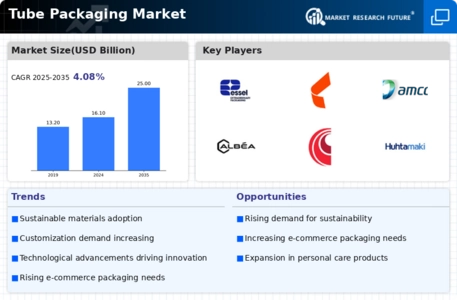
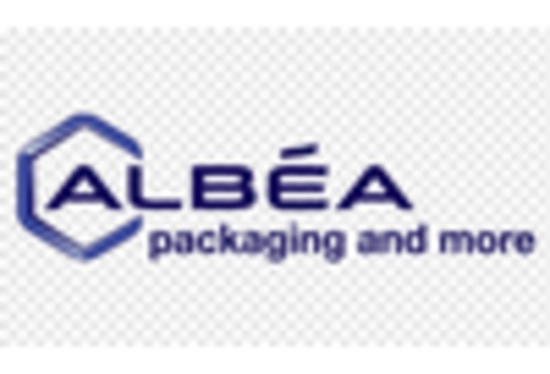
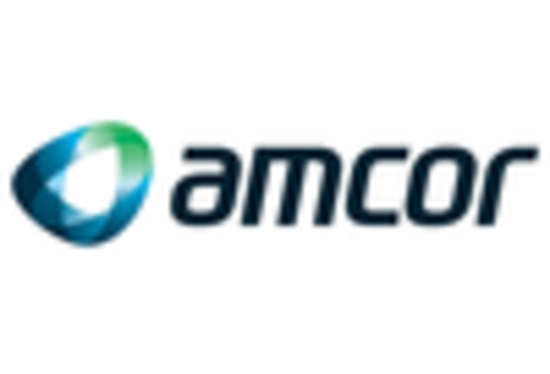
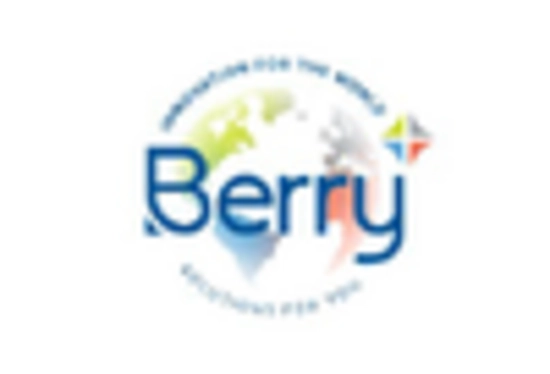
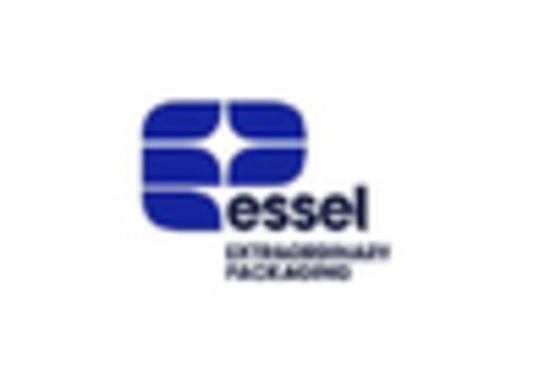
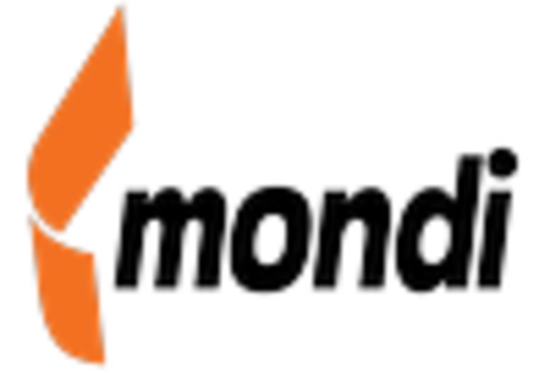
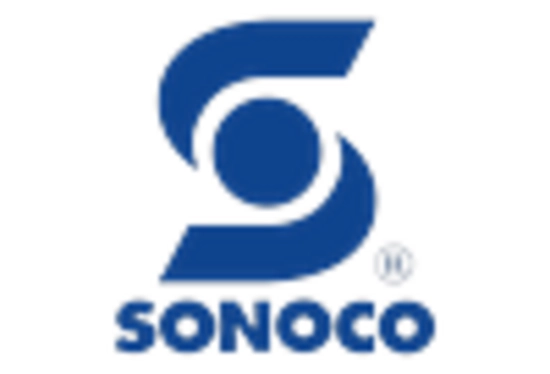

Leave a Comment